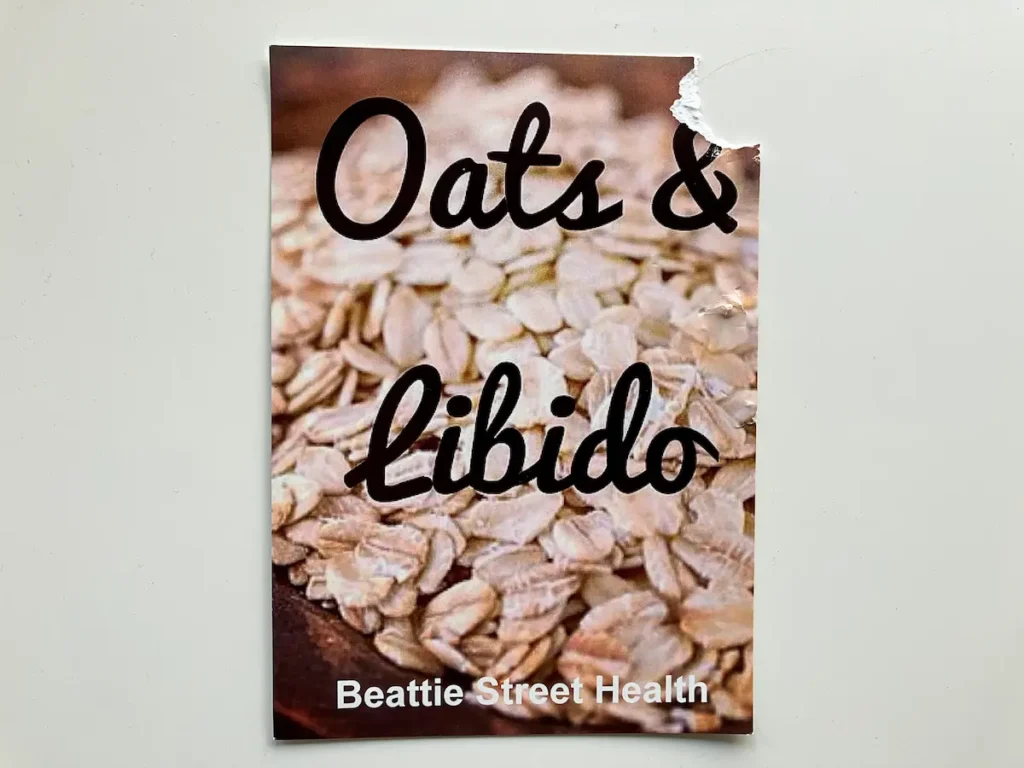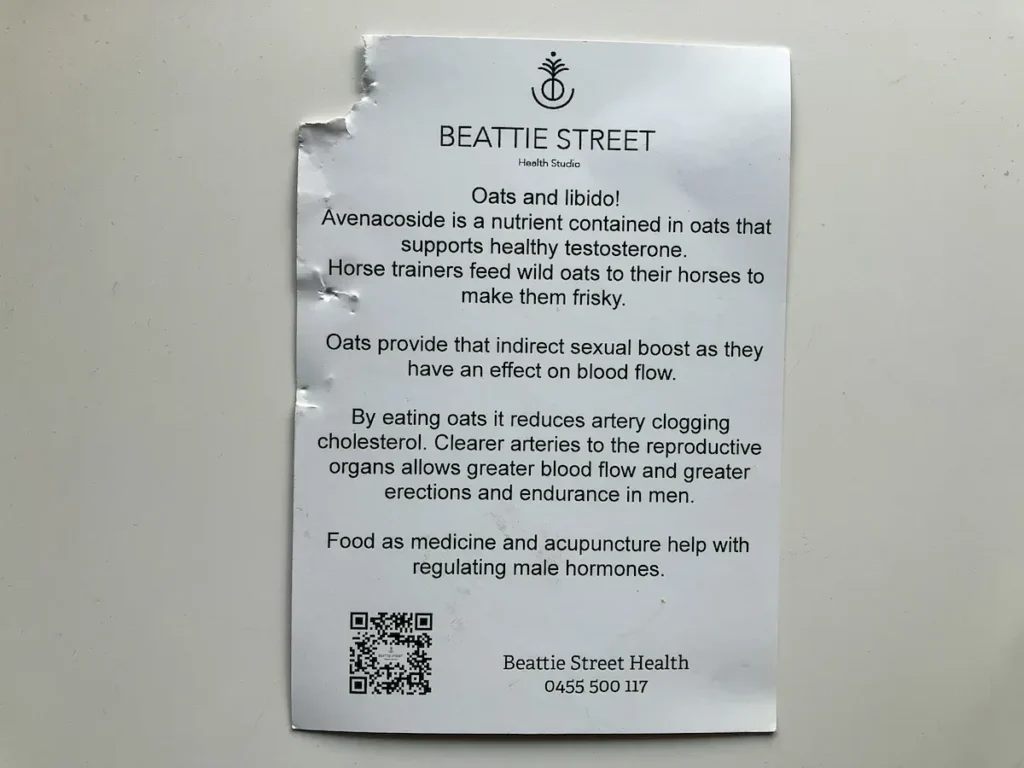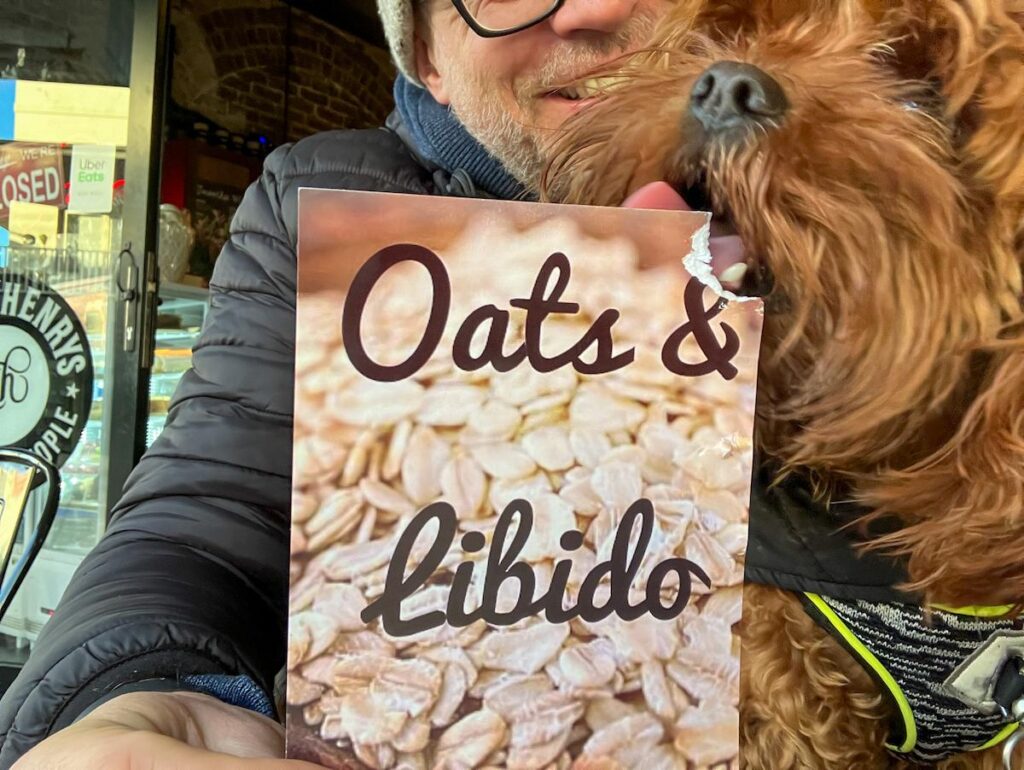Why this sexy postcard flops
I’m taking Biscuit for his dawn walk yesterday when one of those leaflet boxes outside a shop caught my eye. This isn’t a shop on the main road; it’s a shop I don’t know on a backstreet in our suburb.
The box catches my eye because it holds postcards with the headline “Oats & Libido”.

You and Freud can tell your own stories about why that headline caught my eye. My story is that I love advertising, which is why I’m forever scanning for what businesses are doing to market themselves, and I collect ads worth reading.
Plus, it’s not often you see one of those leaflet boxes with anything more than a gatefold menu of services, a boring brochure with as much chance of selling a service as skywriting “Your local physiotherapist”.
Anyway, I pulled out the card and I was not disappointed.

The back of the card has some copywriting as catchy as the headline. Lines like:
Horse trainers feed wild oats to their horses to make them frisky
It reminded me of A-list copywriter Parris Lampropoulos’ ad copy for a mushroom supplement. Parris had dug up a story of a Chinese emperor who drank mushroom tea to give him the stamina to satisfy 10 wives a night.
Parris’ headline was:
“Forbidden Fruit” Once Reserved For Chinese Emperors Restores Youthful Energy, Vitality And Sex Drive”
And it sold millions of dollars of mushrooms.
But back to Rozelle, where oats clear arteries and clearer arteries mean greater blood flow, and greater blood flow means greater erections and endurance.
As I say, not what you expect on a suburban dog walk.
Sure, you don’t expect the content, but more interestingly, you also don’t expect this level of copywriting because most businesses don’t invest in it.
They’d rather save money by skimping on the technique, saving “cost” on copywriting but losing who knows how much profit.
Sadly, it turns out in this case that the payoff is not as satisfying as the beginning.
Unlike the oat-eating men it promotes, the postcard fizzles out with:
Food as medicine and acupuncture help with regulating male hormones.
No call to action. And where did acupuncture come from? Where did hormones come from?
Neither is mentioned in the build-up.
So firstly, you’ve got a sentence that’s harder to read than it should be. (Is it saying food acts as medicine and acupuncture? Surely not, but the reader might have to go back to the beginning to unscramble that.)
Secondly, you’ve got concepts appearing for the curtain call when they weren’t in the play.
And most importantly, what is one supposed to do with that information about acupuncture and hormones?
The shop seems to belong to acupuncturists who’ve done the hard work of creating marketing good enough to stop someone in the street and get that person to fish out their postcard.
Then they’ve kept the reader’s attention with talk of the frisky power of oats, but they’ve said nothing until that final line about what they actually sell: acupuncture.
And as I say, there’s no call to action.
I don’t know what lies at the end of that QR code because they’ve not given me any reason to ask.
Like many good marketing ideas, this one needed someone who could step back and say, “But what are we trying to achieve? And is this going to do it?”
Meanwhile, the local Woolies is left wondering why it can’t keep oats on the shelf.
Need more wild oats in your marketing?
Find out why marketers and business owners actually read the Taleist newsletter. You’ll get oats and all to your inbox — practical tips and thought starters you can use.
